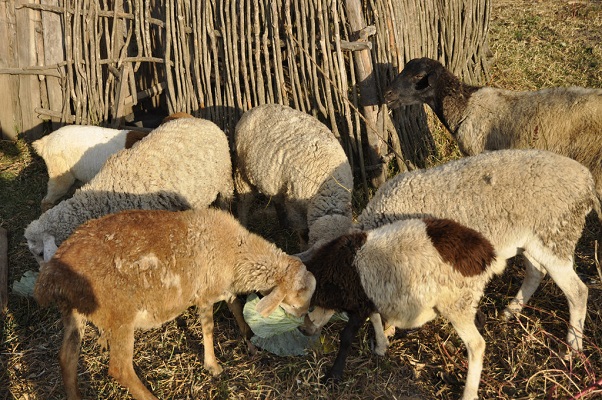

Extreme heat is stressful to livestock, as well as people. Some livestock (and people) tolerate heat better than others. Sheep and goats tend to be less susceptible to heat stress than swine and cattle. Hair sheep usually tolerate heat better than wooled sheep. Fat-tailed sheep are also more heat tolerant.
Goats tend to tolerate heat better than sheep. Goats with loose skin and floppy ears may be more heat tolerant than other goats. Angora goats have a decreased ability to respond to heat stress as compared to sheep and other breeds of goats. Dark-colored animals are more susceptible to heat stress, while light-colored animals may be prone to sunburn. Females usually handle heat better than males. The heat is especially hard on fat animals.
Horned animals dissipate heat better than polled (or disbudded) animals. Young animals are more susceptible to heat stress than older animals, though the geriatric animal is also very vulnerable. In fact, any animal with a poor nutritional status or compromised immunity will be more susceptible to environmental extremes.
Under normal circumstances, livestock are able to maintain their body temperature at a safe range, so long as they have shade and plenty of water. In extreme heat, they will decrease their grazing time and spend more time in the shade, especially during the heat of the day. They will graze mostly in the evening and early morning hours. They should be allowed to rest during the heat of the day.
Extreme heat can have a profound effect on productivity, especially if the onset of heat is sudden, not giving livestock ample time to adapt. It goes without saying that growth rates are reduced in hot weather, as livestock forage less and have reduced appetites. This situation is often worsened by dry, poor quality forage. If temperatures subside, there is often a risk of acidosis or bloat as livestock engorge on feed.
Prolonged high temperatures (above 90ºF/32.2ºC) can impair reproduction. Overheated rams may lack libido (sexual desire). Ideally, rams should be sheared six to eight weeks before the onset of the breeding season. Woolly scrotums should be sheared. In extreme heat, rams can be housed during the day and put with the ewes at night.
After a ram or buck has been affected by heat stress, it will take six to seven weeks before he produces semen that is capable of fertilization. Fully-developed sperm are less susceptible to heat stress than sperm in the developing stages. High temperatures can also be detrimental to embryo survival and fetal development.
Heat stress lowers the natural immunity of animals, making them more susceptible to disease. It is not uncommon to see cases of pneumonia in extremely hot weather. In general, animals will have less tolerance for parasitic and other opportunistic diseases.
During periods of high heat and/or humidity, livestock should be checked frequently for signs of distress.
 Contact Jaguza Support
Contact Jaguza Support